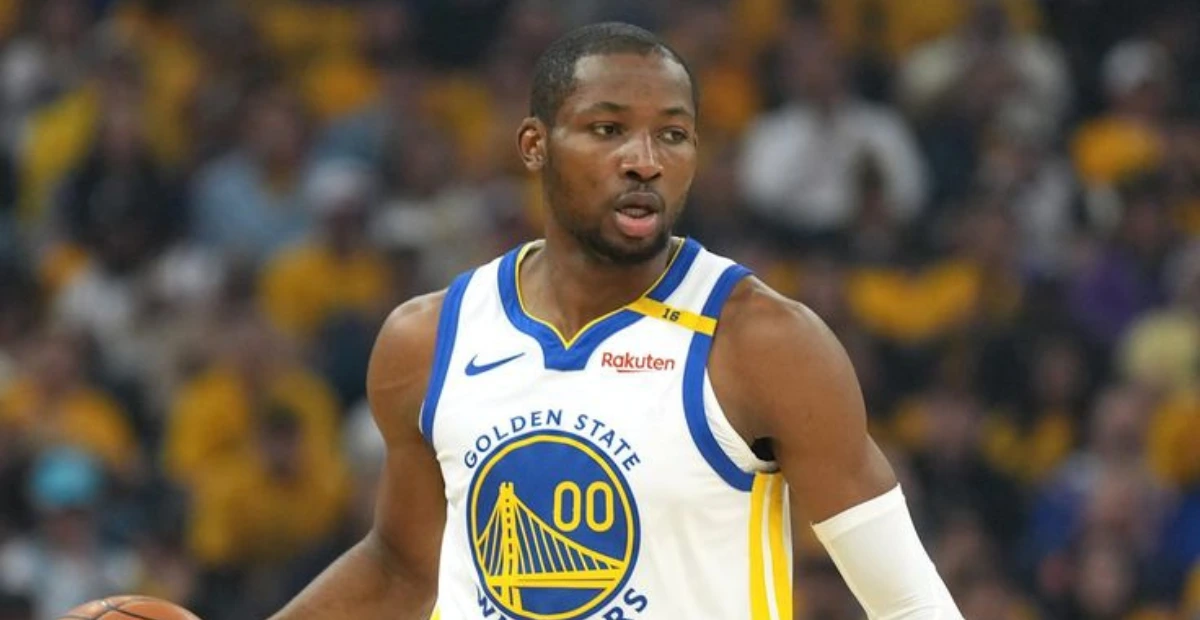The Golden State Warriors and young forward Jonathan Kuminga find themselves locked in a contract negotiation battle that shows no signs of ending soon. Despite the Warriors recently sweetening their offer, Kuminga has once again turned down the team’s proposal, leaving both sides at an impasse as the new NBA season approaches.
The heart of this contract dispute centers around a fundamental disagreement over control and flexibility. While the Warriors want to secure Kuminga’s services while maintaining some team control over his future, the talented forward is seeking more security and autonomy in his next deal. This clash of priorities has created a standoff that could have significant implications for both parties.
The Numbers Behind the Disagreement
The Warriors have made multiple offers to keep their promising young player, but none have satisfied Kuminga’s camp. The team’s latest proposal includes a three-year deal worth $75.2 million, representing a significant increase from their previous two-year, $45 million offer. However, the sticking point remains the same issue that has plagued these negotiations from the beginning: the final year being structured as a team option.
This team option gives the Warriors the right to decide whether to keep Kuminga for that final season, essentially putting his future earnings at the team’s discretion. For a player looking to maximize his earning potential and career flexibility, this arrangement feels restrictive and potentially limiting.
The Warriors have also put a different offer on the table that removes the controversial team option entirely. This alternative proposal is a three-year deal worth $54 million with no options attached. While this arrangement gives Kuminga the security he seeks, the significantly lower annual value makes it less attractive from a financial standpoint.
Kuminga’s Counter-Proposals and Demands
Kuminga’s representatives have been clear about their preferences and have made several counter-proposals to try to find middle ground. They’ve indicated willingness to accept a team option structure, but only if the annual salary reaches closer to $30 million per year. This would represent a substantial increase from the Warriors’ current offers and reflects Kuminga’s belief in his market value.
Alternatively, Kuminga’s camp has shown flexibility by expressing willingness to accept as little as $20 million annually if the final year includes a player option instead of a team option. This player option would give Kuminga the power to decide his own future, allowing him to either stay with the Warriors or test the free agency market depending on how his career develops.
Perhaps most interestingly, Kuminga has proposed a completely different approach: a one-year deal that would pay him more than the standard $8 million qualifying offer he would receive as a restricted free agent. This short-term arrangement would allow him to become an unrestricted free agent next summer, giving him complete control over his next destination. To make this option more palatable to the Warriors, Kuminga has offered to waive his no-trade clause, which would allow Golden State to potentially trade him before the deadline if they choose.
The Warriors’ Perspective and Trade Interest
From the Warriors’ standpoint, they want to secure Kuminga for multiple years rather than risk losing him after just one season. The team has already demonstrated their commitment to keeping him by rejecting trade offers from other franchises. Both the Phoenix Suns and Sacramento Kings have reportedly made inquiries about acquiring Kuminga, but the Warriors have turned down these opportunities.
The most notable rejected offer came from the Sacramento Kings, who proposed trading a first-round pick and guard Malik Monk for Kuminga. For many teams, this would represent solid value for a player in a contract dispute, but the Warriors’ decision to decline suggests they still see significant potential in Kuminga’s future contributions.
The Warriors’ front office and ownership appear to believe that Kuminga could develop into a star-level player who would command significant trade value if he were locked into a more team-friendly contract. This strategic thinking explains their insistence on maintaining some level of control over his future through team options or longer-term commitments.
The Broader Implications of This Stalemate
This contract standoff reflects broader trends in modern NBA negotiations, where young players increasingly seek maximum flexibility and earning potential while teams try to maintain competitive advantages through cost control and roster management. Kuminga’s situation is particularly complex because he’s shown flashes of elite potential but hasn’t yet established himself as a consistent star-level performer.
The timing of these negotiations adds another layer of complexity. With the regular season approaching, both sides face pressure to reach an agreement. If no deal is reached, Kuminga would be forced to play on his qualifying offer, earning significantly less than he could under a long-term contract while facing the uncertainty of restricted free agency.
For the Warriors, failing to secure Kuminga long-term could represent a significant missed opportunity. The team is in a transitional period, balancing their championship aspirations with the aging of their core players. Kuminga represents a key piece of their future, and losing him could set back their long-term planning considerably.
The restricted free agent status gives the Warriors the right to match any offer sheet Kuminga might sign with another team, but this protection comes with risks. If Kuminga receives a large offer from another franchise, the Warriors would be forced to either pay a premium they weren’t initially willing to accept or lose the player entirely.
What Happens Next
As these negotiations continue, both sides will need to decide how much they’re willing to compromise. The Warriors have already shown some flexibility by increasing their offer and adding a third year, but they remain firm on including team control mechanisms. Kuminga, meanwhile, has demonstrated willingness to accept lower annual salaries in exchange for more favorable terms, but he won’t budge on giving the team complete control over his future.
The resolution of this stalemate will likely require one side to make a significant concession. Either the Warriors will need to offer more money or more favorable terms, or Kuminga will need to accept less control over his future than he initially desired. Given the mutual interest in reaching a deal, there’s reason to believe a compromise will eventually emerge, but the timeline remains uncertain.
This contract negotiation serves as a fascinating case study in modern NBA business, highlighting the complex balance between player empowerment and team control that defines today’s league. The outcome will not only determine Kuminga’s immediate future but could also influence how similar negotiations unfold between young players and their teams in the years to come.

